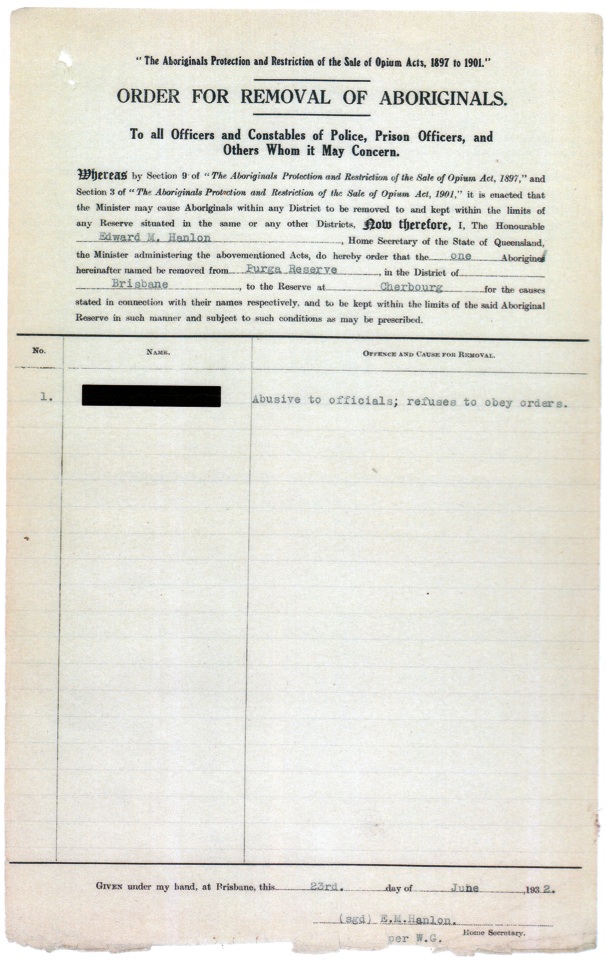Order for Removal June 23 1932
The Chief Protector of Aboriginals, with the settlement staff, developed methods to control and discipline the inmates. The techniques are not overt – direct force is rarely used. Threats are used to ensure residents are obedient.
Inmates are punished by denial of rations for a period, no access to their savings and wages, children placed in a dormitory or detention in the settlement gaol.
The most feared punishment of all was removal.
“Palm Island and Woorabinda – that scared us; because if you came back from your place of employment before the twelve months and broke your contract with the white people you got sent to Palm – that was punishment place. That scared us – even the mention of those names. They seemed so far away – the other side of the world.”
- Ruth Hegarty and Nellie O’Chin

